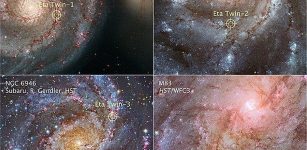Old Space Weather Puzzle – Now A Supercomputer Can Solve It
Eddie Gonzales Jr. – MessageToEagle.com – Scientists have long questioned why the bursts of hot gas from the Sun do not cool down as fast as expected.
Now, a UCL-led team of researchers has used a supercomputer to find out why.
The team will now compare their simulations with ‘real’ data from the European Space Agency’s flagship Solar Orbiter mission, with the hope that it will confirm their predictions and provide a conclusive answer.
The solar wind is a stream of charged particles continuously shot out from the Sun into the solar system. These ejections greatly impact the conditions of our solar system and constantly hit the Earth. When the solar wind hits the Earth, it is almost 10 times hotter than expected, with a temperature of about 100,000 to 200,000 degrees Celsius. The outer atmosphere of the Sun, where the solar wind originates, is typically a million degrees C.
If the solar wind is particularly strong, it can cause problems to satellites, astronauts in space, mobile phones, transport, and even electricity networks that power our homes.
To successfully forecast and prepare for such space weather events, a team of scientists is trying to solve the mysteries that space weather holds, including how the solar wind is heated and accelerated.
The team, with funding from the Science and Technology Facilities Council (STFC) and the European Space Agency (ESA), ran and analyzed simulations of the solar wind on a powerful supercomputer.
Using these simulations, the team deduced that the solar wind stays hot for longer because of small-scale magnetic reconnection that forms in the turbulence of the solar wind. This phenomenon occurs when two opposing magnetic field lines break and reconnect with each other, releasing huge amounts of energy. This is the same process that triggers large flares erupting from the Sun’s outer atmosphere.
“Magnetic reconnection occurs almost spontaneously and all the time in the turbulent solar wind. This type of reconnection typically occurs across an area of several hundred kilometers – which is really tiny compared to the vast dimensions of space,” lead author and Ph.D. student Jeffersson Agudelo (UCL Mullard Space Science Laboratory) said.
“Using the power of supercomputers, we have been able to approach this problem like never before. The magnetic reconnection events we observe in the simulation are so complicated and asymmetric, we are continuing our analysis of these events.”
The simulations were carried out using the DiRAC High Performance Computing (HPC) facility’s Data Intensive at Leicester service, funded by STFC.
Written by Eddie Gonzales Jr. – MessageToEagle.com Staff











